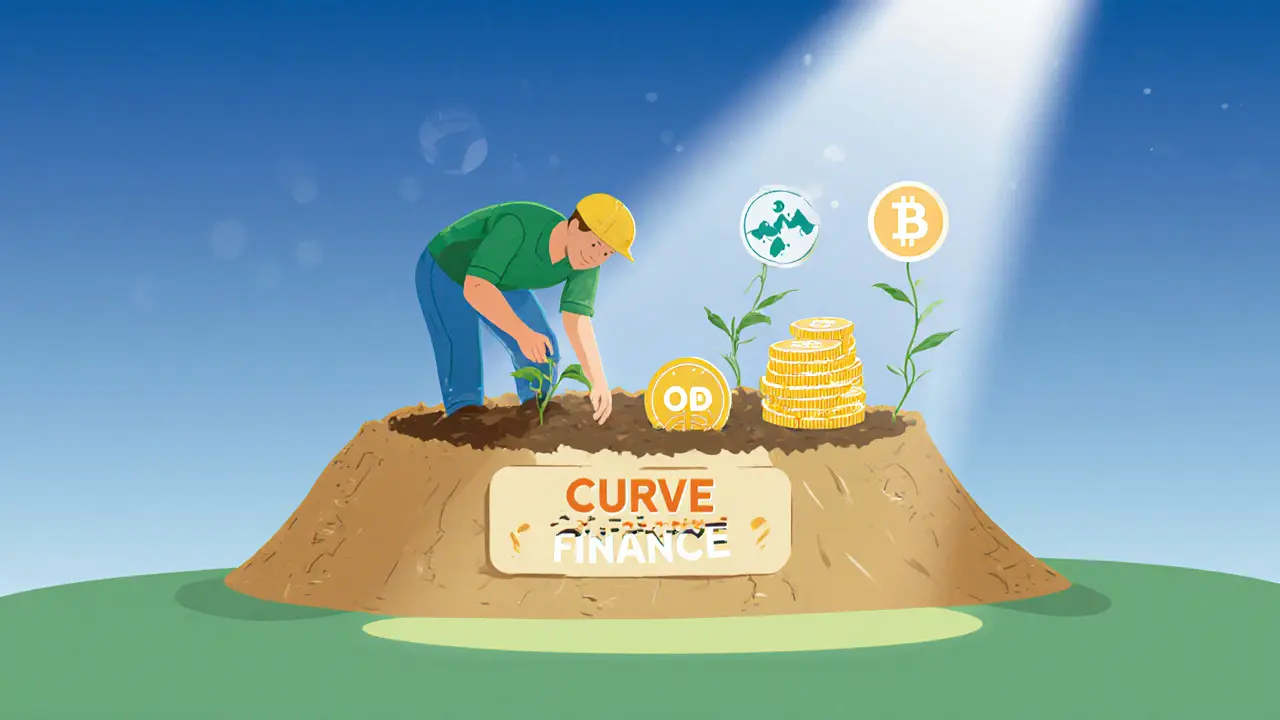Yield Farming: How to Earn Crypto by Lending Your Tokens
When you hear yield farming, a way to earn crypto by lending your tokens to decentralized finance platforms in exchange for rewards. Also known as liquidity mining, it’s not magic—it’s just lending your crypto to a smart contract so others can trade, borrow, or swap assets, and you get paid for it. Think of it like putting money in a savings account, but instead of a bank, you’re using a blockchain protocol like PancakeSwap or Uniswap. You don’t need to be a coder or have a finance degree. You just need tokens, a wallet, and a basic understanding of risk.
But here’s what most people miss: yield farming isn’t about the APY numbers you see on a dashboard. It’s about liquidity pools, smart contracts that hold pairs of crypto tokens to enable trading. When you add your tokens to a pool—say, ETH and USDC—you’re not just earning interest. You’re helping keep the market liquid. That’s why you get paid. But if one token in the pair crashes hard, you could lose more than you earn. That’s called impermanent loss, and it’s real. It’s not a glitch. It’s how the math works.
And then there’s the DeFi, a system of financial apps built on blockchains that don’t rely on banks or middlemen side of things. Many yield farming projects are built on top of DeFi protocols. Some are legit. Most aren’t. You’ll see tokens promising 1000% returns. They’re not giveaways—they’re traps. The ones that last? They’re backed by real usage, not hype. Like how PancakeSwap V3 on Base lets you earn from concentrated liquidity without paying fees. Or how Secret Network hides your trading activity while you farm. These aren’t just buzzwords—they’re functional tools.
You’ll also notice that a lot of the posts here talk about airdrops, scams, and failed projects. That’s because yield farming attracts both builders and grifters. If a project has no trading volume, no audits, and no team, it’s not a farm—it’s a minefield. The same goes for tokens like LAND or SMAK that vanished after their initial hype. Real yield farming doesn’t need a flashy website. It needs liquidity, transparency, and time.
Staking is often confused with yield farming, but they’re different. Staking locks your tokens to help secure a blockchain—like Ethereum—and you earn rewards for that. Yield farming moves your tokens into trading pools to enable swaps and loans. One is about security. The other is about market function. Both can earn you crypto. But only one requires you to watch price swings closely.
What you’ll find in the posts below isn’t a list of top farms. It’s a collection of real stories—what worked, what exploded, and what disappeared overnight. You’ll see how Thoreum rewarded holders through reflections instead of airdrops. How Monsoon Finance paid out tokens for using a privacy bridge. How Zeddex Exchange claimed zero fees but had no liquidity to back it up. These aren’t theoretical lessons. They’re real outcomes from real users.
Yield farming isn’t dead. It’s just getting smarter. The days of chasing 500% APY on random tokens are over. Now, the best returns come from understanding how the system works—not just how fast you can click ‘approve’.
What is NewB.Farm (NEWB) crypto coin? Full breakdown of tokenomics, risks, and current status
NewB.Farm (NEWB) is a low-liquidity DeFi token on Binance Smart Chain with a 99% price drop from its peak. Audited but inactive, it lacks exchange listings, development, and community support - making it a high-risk, low-reward asset.
Details +Best Liquidity Mining Opportunities in DeFi for 2025
Discover the best liquidity mining opportunities in DeFi for 2025, from safe stablecoin pools on Curve to high-yield strategies on Arbitrum. Learn where to earn passive income without risking your capital.
Details +
